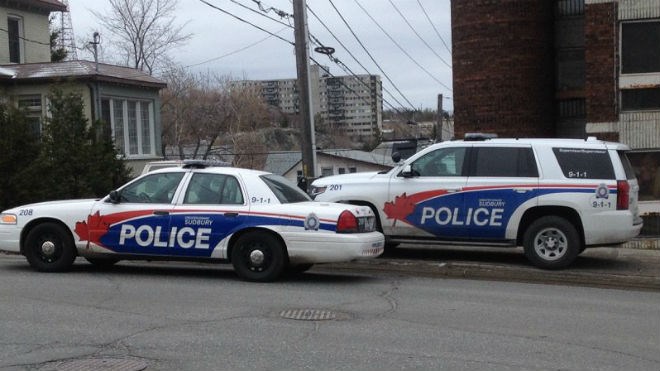Crime rates declined in Greater Sudbury last year, police said Wednesday, with an overall dip of 5.3 per cent in the number of offences committed compared to 2013.
Speaking at the Greater Sudbury Police Services Board meeting, Chief Paul Pedersen said crime in most categories were down last year, with a few exceptions.
“This is a good news day for Sudbury,” Pedersen said.
For the year, property crimes were down by 3.5 per cent; violent crime dropped by 2.5 per cent; and other types of non-violent crime dropped by 4.6 per cent.
Break and enters were down by 30.4 per cent, something Pedersen said was, in part, due to the work of the force's BEAR unit, which focuses exclusively on that type of activity. That allows them to get familiar with repeat offenders who specialize in that type of crime
“They can focus on people who are in (that) business,” he said.
On the other side of the ledger, thefts increased by 5.7 per cent in 2014, fraud by 14.3 per cent and arsons by 113.3 per cent.
The latter crime is characterized by garbage bin and porta potty fires, crimes Pedersen said are difficult to clear because there's typically no witnesses.
The same is true for property crimes, which he said often go unreported for a variety of reasons. For example, if someone breaks into your car and steals a bit of change and some CDs, people often don't call police because they think it's too minor or that there's little chance it will be solved.
But reporting those incidents, Pedersen said, help police discover patterns and other important elements of the crime that helps them catch people who are doing it.
“That's why we encourage people to report them to us,” he said. “The patterns help us determine who might be responsible.”
Calls for service were up 0.5 per cent last year, but are down 4.6 per cent over the last five years. He said 85 per cent of the calls they receive are related to issues other than crime, something that has been consistent over the last five years here and across the province.
He also pointed out that the way information is collected for the crime index can be misleading. If someone assaults someone, for example, then breaks a window, starts a garbage fire and breaches his probation, only the assault is reflected in the statistics.
“That happens all the time,” Pedersen said. “So it doesn't give a true picture of all the work involved in that case.”
Another area that continues to be a problem is impaired driving offences, which increase by four per cent last year compared to 2013. The number of roadside spot checks increased by 33 per cent in 2014, and charges resulting from those stops increased by 17.6 per cent.
But the majority of people charged with DUIs are caught during general patrols, he added.
“The problem of impaired driving in our community is not going away,” Pedersen said.
The force is also working to catch more drivers impaired by marijuana, which is important if legalization or decriminalization is on the horizon.
“We're still trying to catch up with that.”
However, they do have some officers trained on detecting drugged drivers, with 26 roadside tests administered in 2014, leading to seven charges, plus one for refusing to take the test.
As he often has in recent months, Pedersen emphasized the improving crime statistics are related to prevention work and community partnerships police have focused on in recent years. That work has to continue to keep crime trends going the right way.
“I don't want (people to have) the notion that crime prevention is free,” he said. “We have to keep investing in crime prevention or the trends will change.”
Join Sudbury.com+
- Messages
- Post a Listing
- Your Listings
- Your Profile
- Your Subscriptions
- Your Likes
- Your Business
- Support Local News
- Payment History
Sudbury.com+ members
Already a +member?
Not a +member?
Sign up for a Sudbury.com+ account for instant access to upcoming contests, local offers, auctions and so much more.



